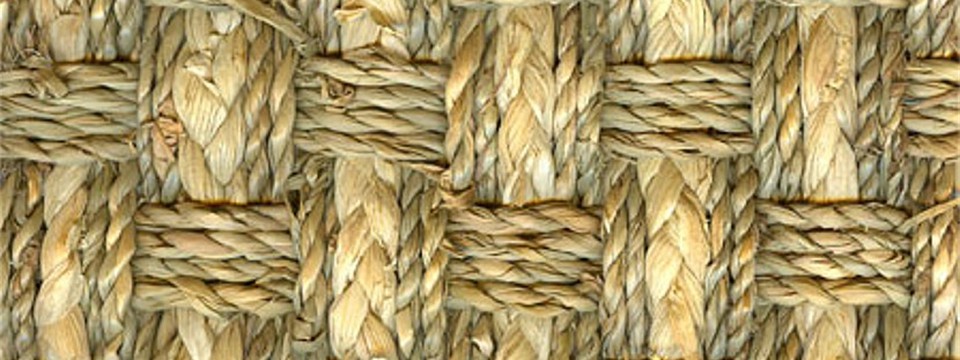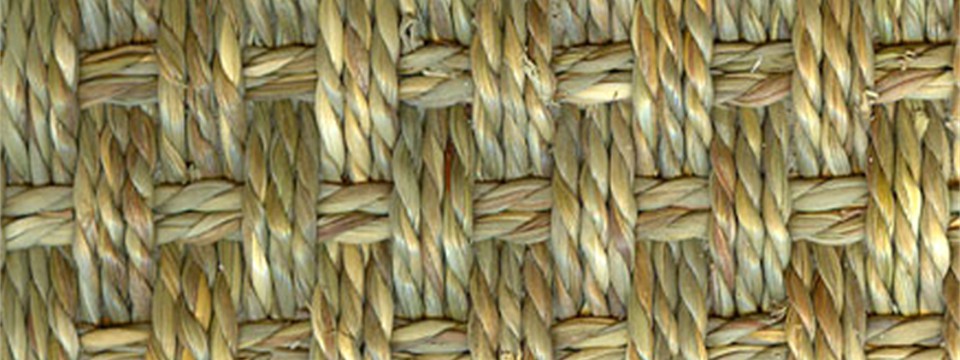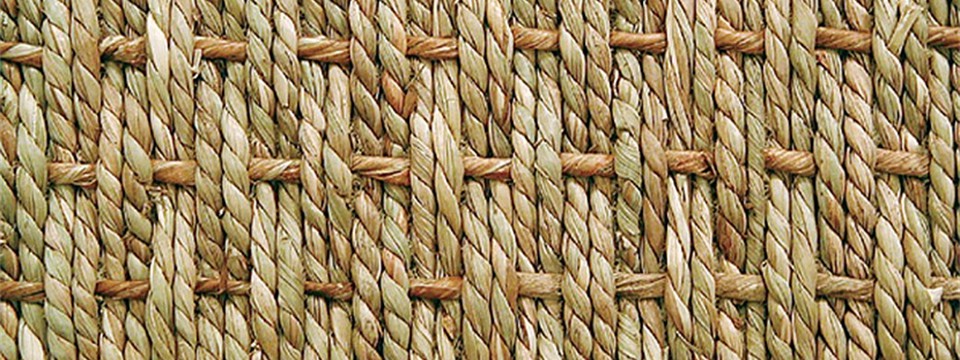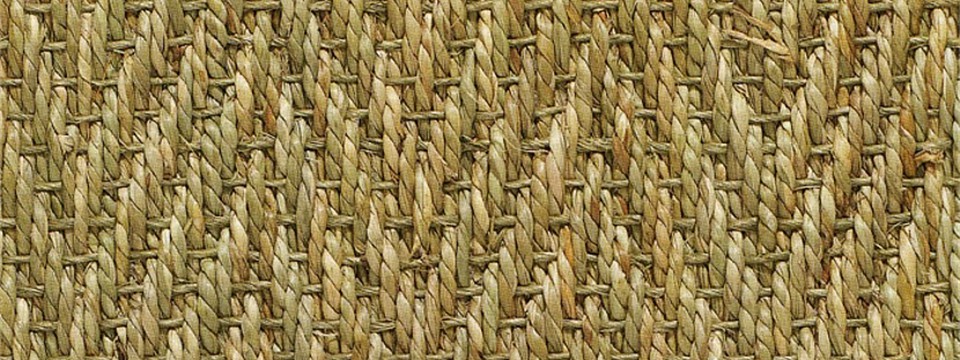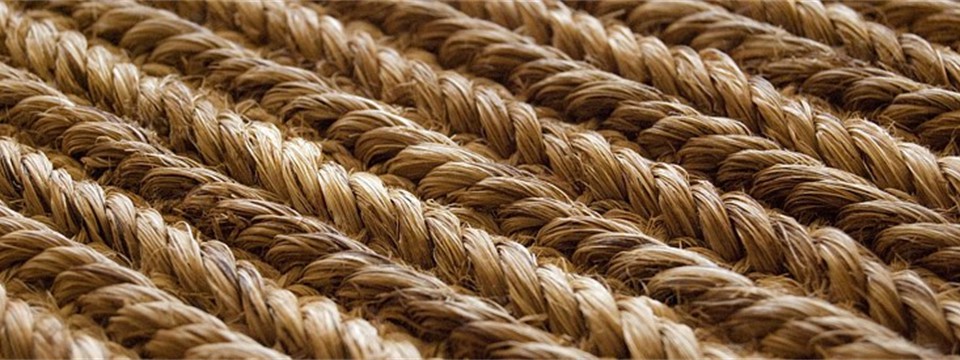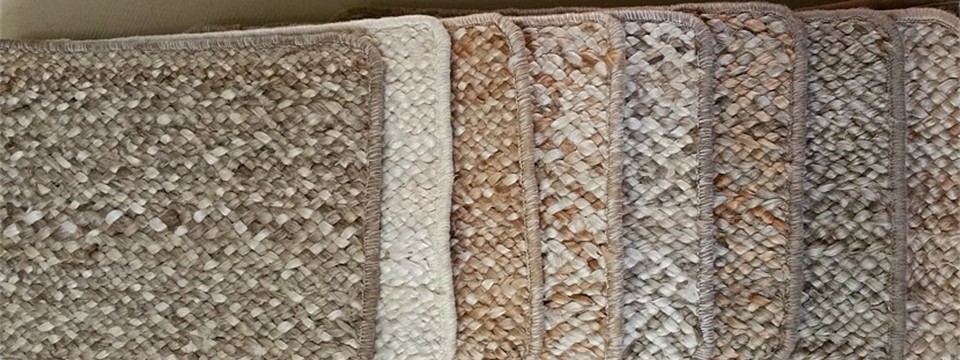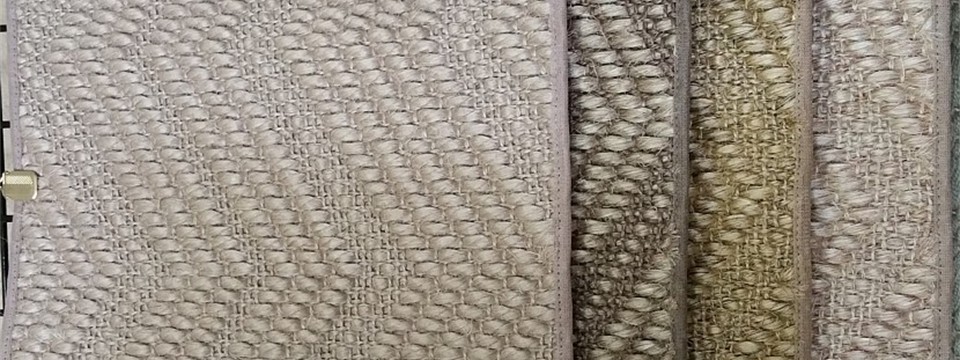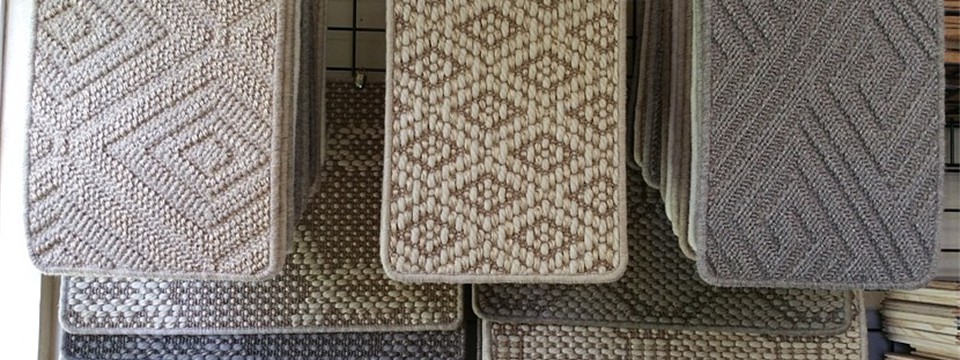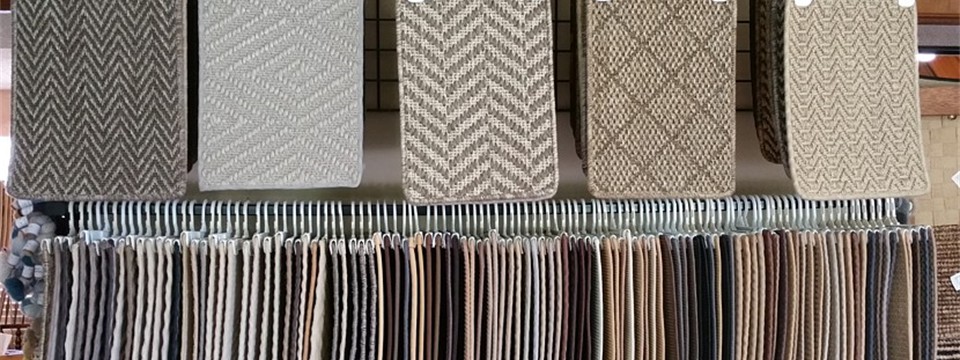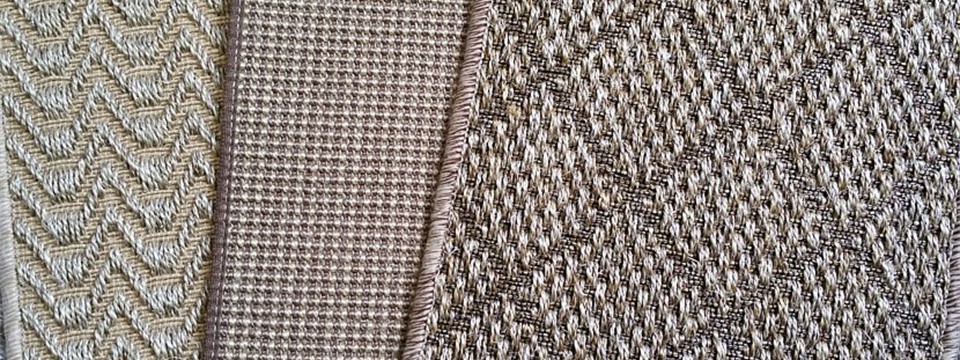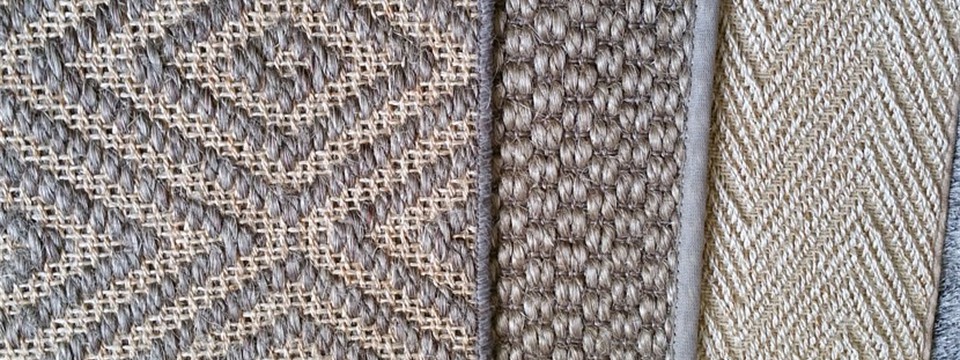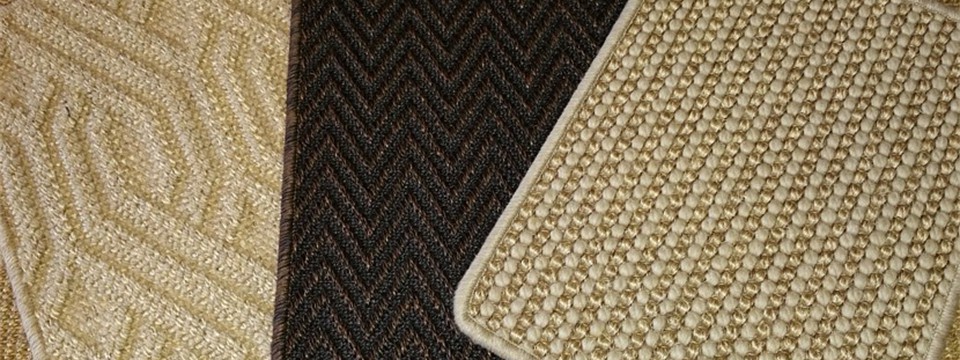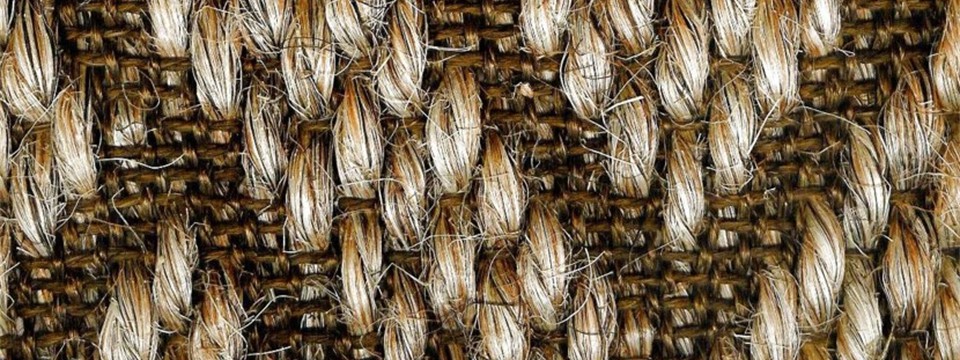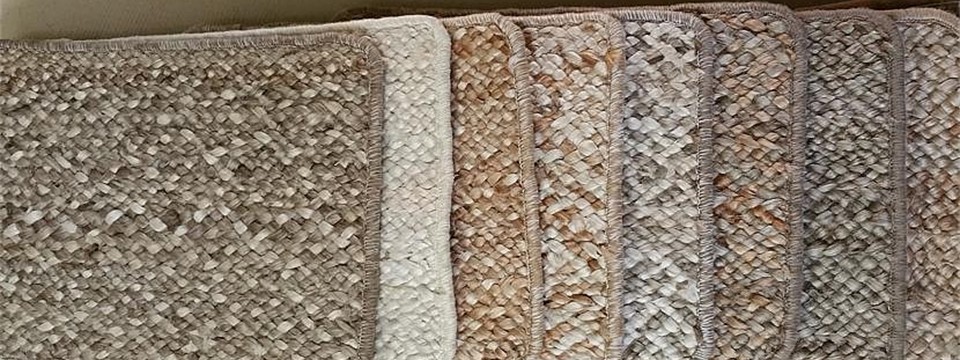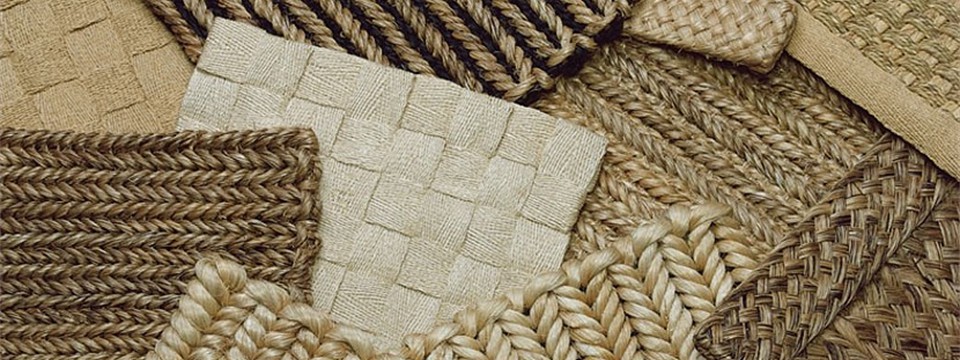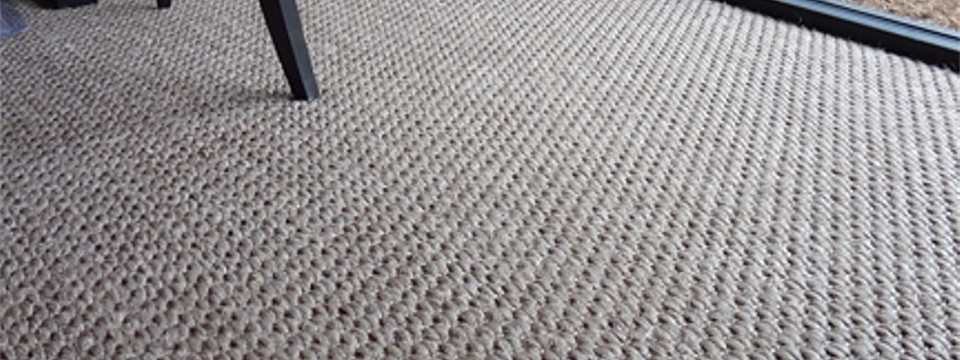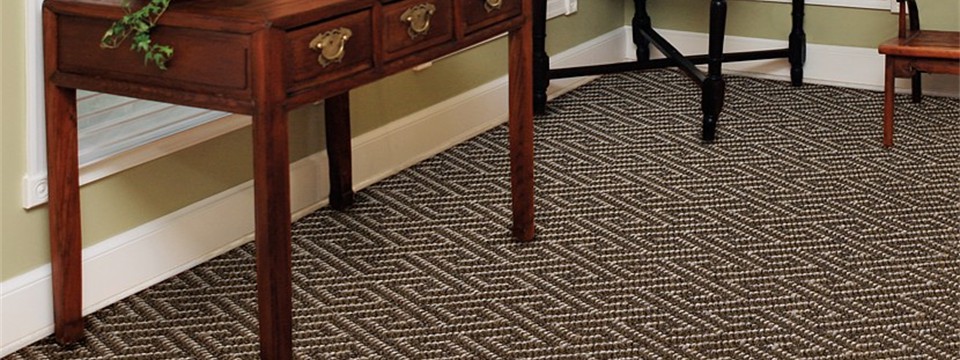Please note our new hours: Monday - Friday, 10am to 4pm BY APPOINTMENT ONLY.
Natural Carpets
Abaca
Abaca is one of the most unique textures in the environmentally-friendly group of farm grown sustainable fibers. The abaca tree grows to harvesting size in 1 to 2 years. The outer bark of this unique plant yields a hardy casual quality fiber, dark to medium brown in color, while the inner core produces a lighter, finer fiber for a more sophisticated rug.
Bamboo
Bamboo is a grass rather than a wood, but it is harder than oak. Bamboo looks, installs, sands and finishes like wood. It is a sustainable product harvested from controlled forests, concentrated in China. As a grass, bamboo regenerates faster than wood and it is a remarkably, renewable resource.
Bamboo comes in a natural honey color, darker carbonized shade, or stained in custom colors.
Coir
Coir is extracted from the outer husk of the coconut. It is a very course, stiff fiber and is resistant to rot and salt water, making it an ideal fiber to create a variety of mats and outdoor carpets. Coir can be dyed and comes in several styles and colors.
Cork
Cork has excellent acoustical and thermal qualities, is resilient and easy to maintain. Cork comes from the bark of the Cork Oak tree grown in the forests of Spain and Portugal. The tree has an average lifespan of 500 years. The bark, which protects the tree during its life, is harvested every 10 years so that the tree itself is never felled. The bark is inherently fire retardant, thereby preventing destruction by forest fires. It is resistant to temperature changes as well as more than 38 species of insects, including the termite. Due to characteristics of cork, it truly is a natural product that makes for an incredibly durable and unique looking floor. It has been used for flooring since the turn of the century and can be found in its original installation in places like the Library of congress since the early 1900’s. There are many new patterns and vibrant colors to meet the demand of today’s design trends.
Hides
Unique hide rugs add interest and texture to modern designs and give a warm accent to traditional and old world décor. As a by product of the food industry, hides make an ECO-friendly choice. Hides are easily cleaned, vacuum periodically and use soap and water for spills. Styles, colors and textures are limitless.
Jute
Taking just four to six months to mature, jute is one of the most readily available fibers for use as area rugs, mats and cloth. The plant prefers climates that are both warm and humid for growing, but the woven jute products perform best in dry interior spaces. The woven fiber tends to expand and skew with changes in humidity making it unsuitable for wall to wall application.
Leather
Leather rugs, made from recycled leather clothing, are available in many colors in various sizes, priced for the budget conscious and up. Leather rug bindings are available in many textures and colors.
Mountain Grass
The dry growing conditions of the highland fields of China, are perfect for producing this thick, rich brown grass reed. Although limited in weave styles, a simple mountain grass rug adds an understated warm element to any room.
Paper
Paper rugs are woven of yarn spun from conifer pulp, a by product of the managed forest industry. This ECO friendly fiber is both smooth and very durable. Paper rugs are an elegant design choice whether simply woven or combined with wool yarn.
Raffia
This strong yet pliable fiber comes from large Palm trees cultivated specifically for harvest and export in East Africa. The leaves are stripped and dried to create strands of raffia which can be woven into many textures. The creamy-brown colored strands, best for weaving rugs, come from a specific palm tree originating on the Island of Madagascar.
Seagrass
CDC Carpets stocks seagrass with latex and cushioned "urethane" backing making it quickly available to our customers for rugs or wall to wall installation. Seagrass is grown in saltwater flooded paddy fields in China. After harvesting, the reeds are dried and spun into strong yarn, suitable for weaving into several styles. It’s impermeability makes it hard to dye, yet easy to keep as spills can simply be wiped up. Seagrass is one of the most comfortable of the natural woven fibers, making it a great choice for any area in your home. Installed wall to wall by the direct glue method or used as area rugs, seagrass adds a casual, organic feeling to any room. Despite it’s name, seagrass is not compatible with water or very high humidity. If exposed to either one, it will mildew. Treatment with an antimicrobial is advised if these conditions exist. Seagrass continues to be one of our most popular selections, complimenting any décor. CDC Carpets stocks seagrass with latex backing cushioned backing making it quickly available to our customers for rugs or wall to wall installation.
Sisal
Farm raised primarily in Brazil and Africa, the agave plants’ interior fiber is used both for areas rugs and broadloom products. Valued for its durability and ability to take dye well, sisal makes a great natural fiber to create a wide variety of patterns, colors and textures.
